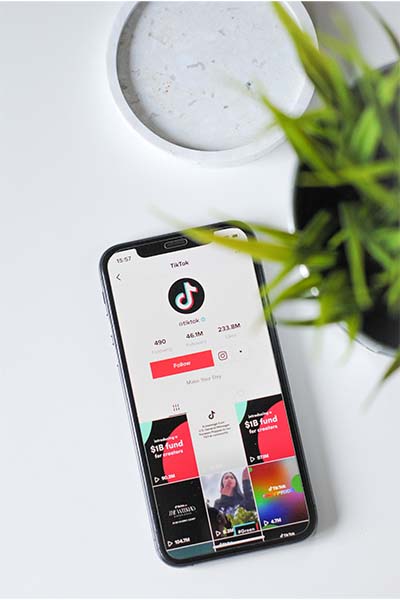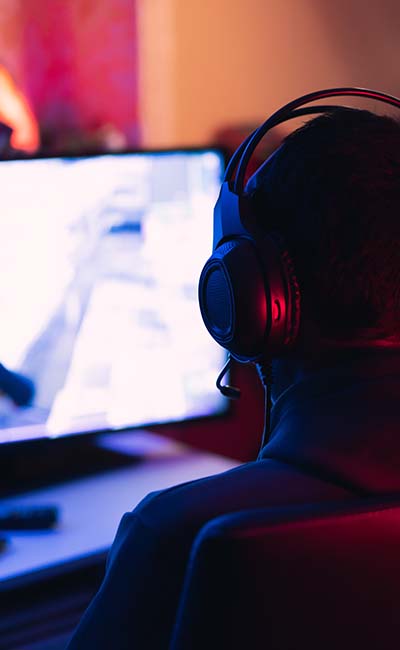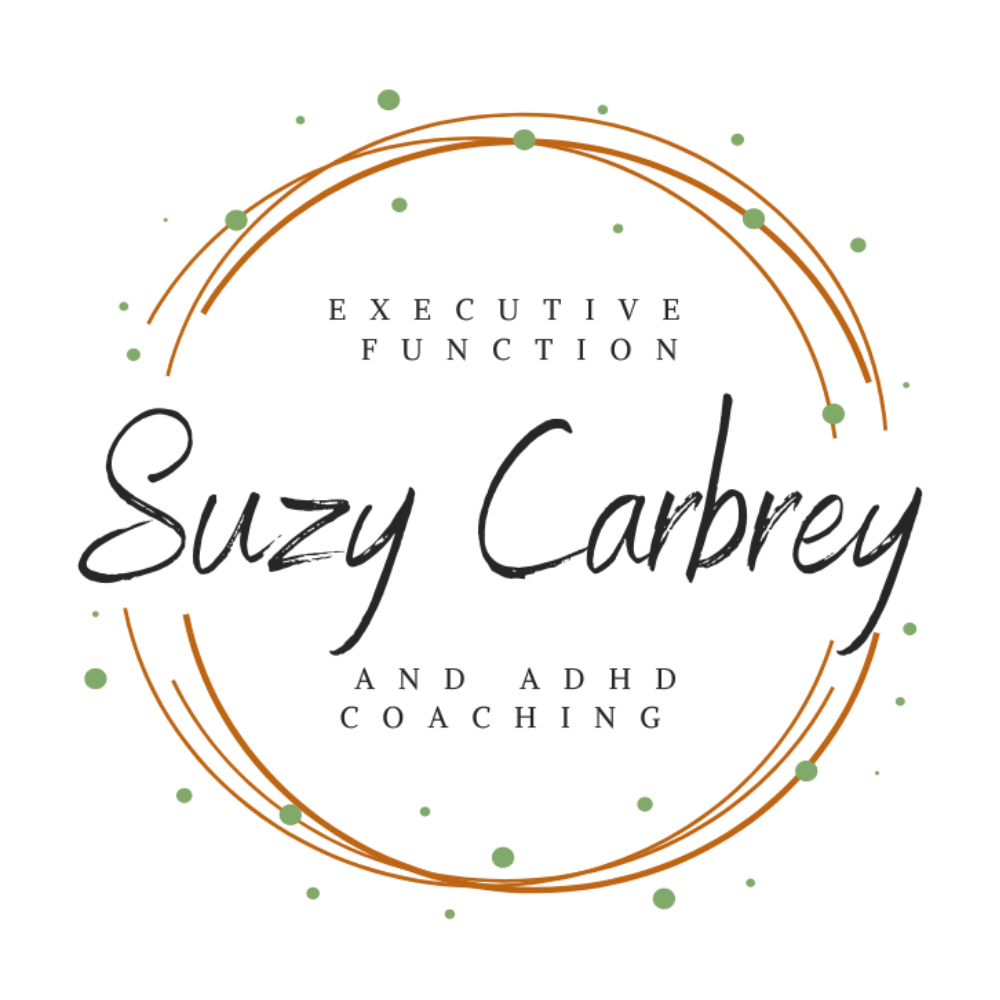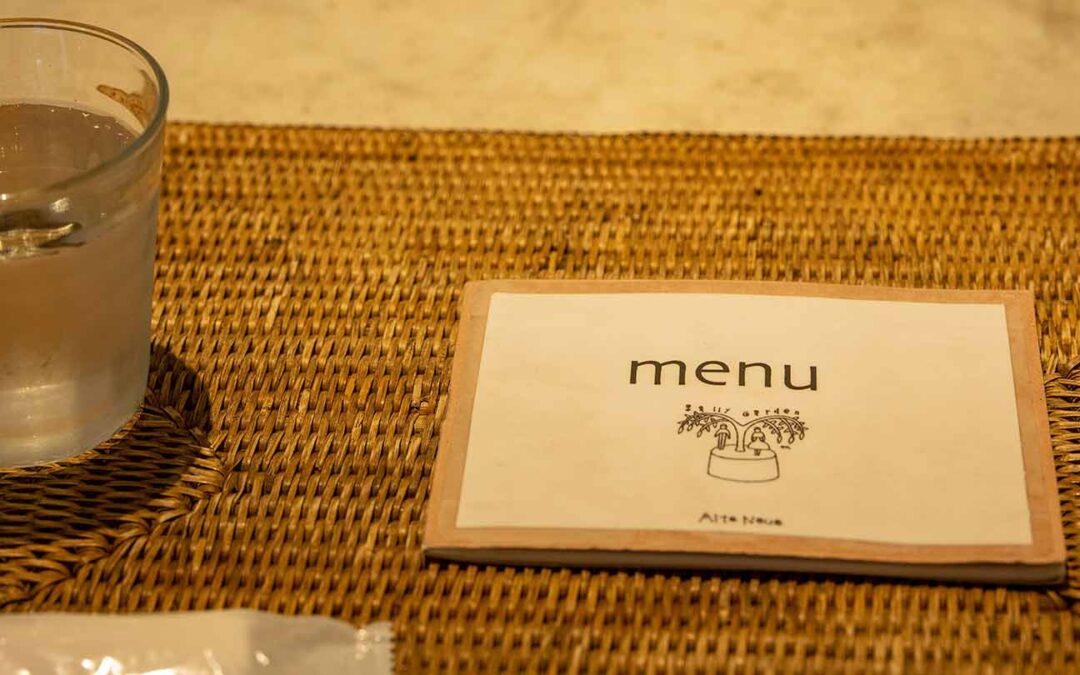If you’ve ever felt stuck in a cycle of scrolling through social media, snacking mindlessly, or procrastinating instead of tackling important tasks, you’re not alone. Many adults with executive functioning challenges, including ADHD, often struggle with low dopamine levels, which can make it difficult to initiate tasks, stay engaged, and maintain focus. However, with the concept of a dopamine menu, you can empower yourself to manage your brain’s need for stimulation in a way that enhances productivity and well-being, without the crash that often follows less mindful choices.
Why Dopamine Matters: The Science Behind Motivation
Dopamine is often called the “motivation chemical” because it plays a crucial role in how we experience motivation, reward, and pleasure. It helps our brain recognize what’s interesting, rewarding, or worth pursuing. Think of dopamine as the brain’s “green light,” it tells us, Yes! This is important! Keep going!
For people with ADHD and executive functioning challenges, dopamine levels tend to be lower or less efficiently regulated. This means that everyday tasks, like starting work, responding to emails, or even making a simple decision, might feel more difficult than they should. Without enough dopamine, tasks that seem “boring” or repetitive can feel impossible to begin.

This is why our brains often crave quick dopamine hits, like scrolling through social media, playing video games, or eating sugary snacks. These activities offer fast but short-lived bursts of dopamine, leaving us chasing the next hit without actually feeling satisfied. Doom scrolling, for example, can feel like a mindless way to unwind, but it often leaves us drained, overstimulated, and even more unmotivated than before. These “cheap dopamine” sources don’t truly restore our energy or mood, they deplete them.
Instead, we need to replace these fleeting dopamine hits with activities that fill our cups, things that restore our energy, improve our mood, and actually give us more joy and motivation. Sustainable sources of dopamine, like engaging in hobbies, moving our bodies, socializing with supportive people, or completing small tasks, help us feel more focused and fulfilled in the long run. That’s where a dopamine menu comes in. By intentionally choosing activities that nourish our brains instead of depleting them, we can create lasting motivation and a greater sense of well-being.
How Technology Affects Dopamine and Motivation (According to Dr. Alok Kanojia)
Dr. Alok Kanojia, also known as Dr. K, is a psychiatrist who discusses how technology affects our brain chemistry, especially dopamine. Dopamine is a chemical in the brain that helps us feel motivated and rewarded. When we do something enjoyable, like checking our phones or playing a video game, we get a quick dopamine boost.
But too much of this instant dopamine can cause problems. If we constantly use technology for quick rewards, our brain starts to expect easy dopamine hits. This can make everyday tasks, like working, studying, or even hobbies, feel less exciting and harder to start.

It’s important to note that in 2024, Dr. Kanojia received a formal reprimand from the Massachusetts medical board related to ethical concerns around professional boundaries in his online work. No penalties or restrictions were imposed. As with any source, readers are encouraged to use their own discretion and consult multiple perspectives.
Timing Matters: How Morning Screen Time Affects Motivation
Dr. K explains that when we use technology matters. If we check social media, play games, or watch videos first thing in the morning, we use up a lot of our dopamine early in the day. This can leave us feeling unmotivated and sluggish for the rest of the day because our brain has already gotten its “reward” from easy, instant sources.

This can also create a cycle:
- We start the day with technology, which gives us quick dopamine.
- Later, regular tasks feel boring because they don’t give the same instant reward.
- Since we feel unmotivated, we turn back to technology to get another dopamine boost.
- This keeps going, making it harder to focus on important things.
How to Break the Cycle and Stay Motivated
Dr. K suggests a few ways to keep technology from draining our motivation:
- Delay screen time in the morning. Try starting the day with something else, like stretching, eating breakfast, or writing a to-do list, before checking your phone.
- Take breaks from fast dopamine hits. This means stepping away from social media, gaming, or binge-watching to let your brain reset.
- Find natural dopamine boosts. Exercise, socializing, hobbies, and setting small goals can all help increase motivation without relying on technology.
Being mindful of when and how we use technology can help keep our motivation strong throughout the day. Small changes, like waiting a little longer before picking up your phone in the morning, can make a big difference!
What is a Dopamine Menu?
Jessica McCabe, the creator of the How to ADHD YouTube channel, is a well-known advocate for ADHD awareness and education. She shares personal experiences and research-backed strategies to help individuals with ADHD navigate daily life. One of the concepts she promotes is the dopamine menu, a personalized list of activities that boost dopamine, a neurotransmitter crucial for motivation and focus. A dopamine menu can include activities like listening to music, engaging in movement, or tackling a small, rewarding task, helping those with ADHD regulate their energy and stay engaged throughout the day.
A dopamine menu is a curated collection of activities designed to provide healthy, sustainable sources of stimulation. Similar to a restaurant menu, it offers a variety of choices tailored to meet different needs and energy levels throughout your day.
A dopamine menu is not:
- A to-do list
- A replacement for medication or therapy
- A magical fix for executive functioning struggles
Instead, it’s a proactive tool that helps regulate dopamine levels by offering accessible options when motivation is low.

Building Your Own Dopamine Menu
Step 1: Brainstorm Dopamine-Boosting Activities
List activities that bring you joy, movement, or focus without causing an energy crash.
Step 1: Brainstorm Dopamine-Boosting Activities
List activities that bring you joy, movement, or focus without causing an energy crash.
Step 2: Organize by Category
Sort activities based on time, effort, and engagement level so you can easily choose what you need in the moment.
Step 3: Make it Visible
Keep your menu accessible—on a notes app, a sticky note near your workspace, or a whiteboard.
Structuring Your Dopamine Menu
Your dopamine menu should include a mix of activities that provide quick boosts, sustained engagement, and enhancements to daily tasks.
Appetizers (Quick Hits of Dopamine)
These are small, easy-to-access activities that provide a fast burst of stimulation, perfect when you need a quick reset.
- Drinking a cup of coffee or tea
- Doing a 1-minute stretch or jumping jacks
- Listening to a favorite song
- Sipping cold water or chewing gum
- Stepping into sunlight for a few moments
Main Courses (Sustained Engagement)
These activities are more immersive and help you feel accomplished. They take a bit more time but offer deeper dopamine rewards.
- Going for a walk or exercising
- Journaling or creative writing
- Cooking a meal or baking
- Engaging in a hobby (e.g., painting, knitting, or building something)
- Playing an instrument or singing

Side Dishes (Enhancements to Routine Tasks)
These are small changes you can make to boring or difficult tasks to make them more engaging.
- Listening to a podcast or audiobook while doing chores
- Using a fidget toy while working
- Setting a timer to gamify a task
- Body doubling (working alongside someone for accountability)
- Playing instrumental music while focusing
Desserts (Easy Dopamine That Can Be Overdone)
These activities provide a quick dopamine boost, but they can sometimes lead to overstimulation or regret if not managed.
- Social media scrolling
- Binge-watching shows
- Playing video games
- Eating sugary snacks
- Online shopping
There’s nothing wrong with enjoying “dessert” sometimes! The key is intentional use, rather than relying on them as your primary dopamine source, they should be an occasional treat.
How to Use Your Dopamine Menu Effectively

To make the most of your dopamine menu:
- Pre-plan Your Choices – When you notice focus or energy dipping, refer to your menu before defaulting to less productive habits.
- Mix and Match – Combine different activities to tailor your dopamine boost:
- Pair an appetizer (coffee) with a main course (journaling).
- Add a side dish (podcast) to a necessary task (folding laundry).
- Check-in With Yourself – Pay attention to how different activities make you feel. Adjust your menu based on what energizes or drains you.
- Have an Emergency Option – Keep a go-to activity for decision-fatigue moments, like stepping outside for fresh air or doing a one-minute stretch.
Final Thoughts on Your Dopamine Menu
Your dopamine menu should evolve over time, reflecting what truly helps you stay focused and motivated. By intentionally selecting how you stimulate your brain, you can work with your executive functioning challenges rather than against them.
With a well-curated dopamine menu, you’ll have a reliable tool to:
- Recharge your energy
- Maintain focus
- Reduce procrastination
- Feel more in control of your time and tasks
A dopamine menu is a simple yet powerful way to take charge of your motivation and energy levels. By choosing activities that nourish rather than drain you, you can break free from the cycle of chasing quick dopamine hits and instead build sustainable focus, productivity, and well-being.

The key is to experiment, adapt, and make your dopamine menu work for you. Start small, add a few go-to activities, and keep your list somewhere visible. When you feel stuck, pause and choose something from your menu to help re-engage your brain in a way that supports your long-term goals. Over time, these small shifts can create lasting change, making it easier to stay motivated, enjoy your work, and feel more in control of your day.
Start today by creating your personalized dopamine menu and see the difference it makes. Your brain deserves both the stimulation it craves and the productivity you need!
Learn more with Online Coaching for Executive Functioning / ADHD
Ready to gain control and enhance your executive functioning? As an experienced and compassionate coach, I specialize in providing support for executive functioning and ADHD. To embark on your journey, please reach out to me at 708-264-2899 or email hello@suzycarbrey.com to schedule a FREE 20-minute discovery call consultation.
With a background as a speech-language pathologist, I have a strong foundation in executive functioning coaching. My graduate degree program in SLP placed a significant emphasis on cognition, including executive functions, and I have years of experience in medical rehabilitation, providing cognitive-communication therapy. Additionally, I have completed an ADHD Services Provider certification program, I am Solutions-Focused Brief Therapy Diamond Level 1 certified and I am trained in the Seeing My Time® executive functioning curriculum.
Experience the convenience and effectiveness of online coaching, backed by studies that demonstrate equal results to in-person services. Parents, professionals, and emerging adults love the convenience and privacy of receiving coaching from their own homes.
Whether you reside in Chicago, Milwaukee, Indianapolis, Kansas City, or anywhere else around the globe, I am here to assist you. Schedule your discovery call consultation today, and I eagerly anticipate the opportunity to work with you!
Please note that although I am a certified speech-language pathologist, all services Suzy Carbrey LLC provides are strictly coaching and do not involve clinical evaluation or treatment services. If you require a formal speech therapy evaluation and treatment, please inform me, and I can provide appropriate recommendations.

